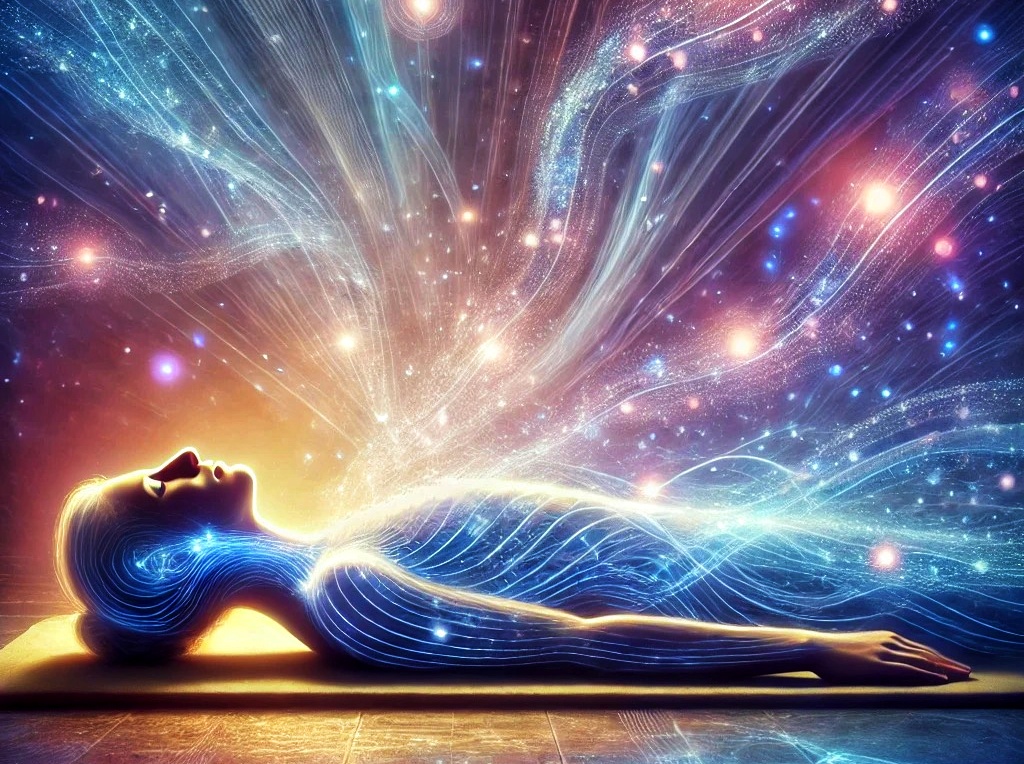innerdance – A Deep Dive into Neurochemical Self-Regulation and Consciousness
Innerdance is far more than just a transformative experience – it is a profound process of inner exploration based on neurochemical mechanisms, musical vibrations, and the body’s natural self-regulation. In this article, we explore the origins of innerdance, its neurobiological foundations – particularly the role of dopamine systems – the regulation of the autonomic nervous system, and the significance of brainwaves.
The Origins of innerdance
Innerdance has its roots in the Philippines and was brought into the world by Pi Villaraza. Inspired by personal transformational processes and fasting on a remote island, he experienced his first innerdance. Based on this, he developed a method founded on music, conscious awareness, and energetic touch. Since then, innerdance has evolved and now integrates insights from neuroscience, music therapy, and consciousness studies.
Neurochemical Self-Regulation through innerdance
Innerdance deliberately uses neurochemical processesto enable deep self-experiences. Neurotransmitters such as dopamine, serotonin, acetylcholine, and GABA are modulated to create a balance between activation and relaxation .
With the right balance of these neurotransmitters, a state emerges in which the body can self regulate.release blockages, and process emotional experiences.
The Role of Dopamine Systems and the Inner Clock
Dopamine is not only important for motivation and reward, but also affects time perception. According to the dopamine-clock hypothesis dopamine speeds up or slows down the internal clock:
More dopamine: Time passes faster, the focus is outward, consciousness is active.
Less dopamine: Time feels elongated, the focus turns inward, introspective states arise.
Innerdance harnesses these natural mechanisms to consciously navigate between phases of activation and relaxation, guiding the body into a deep, regenerative state – akin to dreaming.
Homeostasis – The Body’s Inner Balance
A central aspect of innerdance is the promotion of homeostasis- the body’s internal equilibrium. This occurs on several levels:
Neurochemical balance: The conscious regulation of dopamine, serotonin, and GABA allows the nervous system to harmonize.
Energetic processes: Emotional blockages can dissolve as the body’s energy flows freely.
Psychological integration: Unconscious themes can surface and be processed through the deep experiences of innerdance.
The Autonomic Nervous System and innerdance
The autonomic nervous system (ANS) plays a crucial role in the innerdance process. It governs unconscious bodily functions like heartbeat, breathing, and digestion, and consists of two main branches:
Sympathetic ("fight or flight" mode):Activated by stress and increases dopamine release.
Parasympathetic ("rest and digest" mode):Supports relaxation, regeneration, and emotional processing.
Innerdance uses targeted musical rhythms and frequencies to enable co-activation of these states, helping the body regain control of its own reactions in a safe space. People with heightened emotional, mental, or physical sensitivities discover that it’s possible to face fear or relax amidst stress without being overwhelmed.
The Role of Brainwaves
Innerdance consciously influences brainwaves through curated music and the natural energy flow of the body. The key brainwave states during innerdance include:
Beta waves (13–30 Hz): Alert, active consciousness – usually at the beginning of the process.
Alpha waves (8–13 Hz): Relaxation and the onset of trance states.
Theta waves (4–8 Hz): Deep access to the subconscious, emotional processing, intuitive insights.
Delta waves (0.5–4 Hz): Deepest relaxation, similar to deep sleep states.
The transition between these brainwaves allows dynamic access to different states of consciousness and supports deep transformation.
Music plays a central role in the innerdance process as it directly influences the nervous system and neurochemistry.The playlist is consciously designed to:
Regulate dopamine and serotoninby using specific frequencies.
Support transitions between brainwave statesto enable deep trance experiences.
Facilitate emotionally charged processesby using sound structures that elicit emotional responses.
Conclusion
Innerdance is a holistic practice grounded in deep neurobiological mechanisms. By consciously regulating dopamine, brainwaves, the autonomic nervous system, and musical frequencies, it initiates a natural healing process. It enables profound self-exploration,supports the body’s self-regulation, and can improve emotional and psychological well-being in the long term.
In a world often dominated by stress and sensory overload, innerdance offers a unique path to deep relaxation, inner clarity, and neurochemical balance.It is a journey into cosmic consciousness, guided by music, rhythm, and the natural intelligence of the body.

